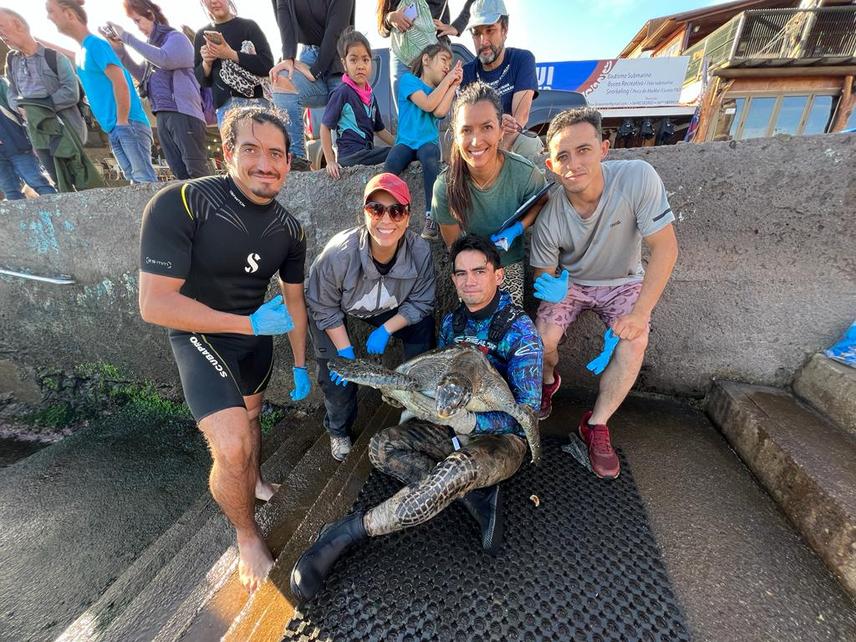Rocio Álvarez Varas
Other projects
29 Sep 2014
Research and Conservation at the Southernmost Foraging Site for Black Sea Turtles (Chelonia mydas agassizii) in the South Eastern Pacific
15 Sep 2021
Population Genomics and Adaptation of the Black Turtle in the Pacific Ocean: Management and Conservation Implications
Building on previous findings of excessively high mercury (Hg) concentrations in the blood of green turtles (Chelonia mydas) from Rapa Nui – among the highest reported globally – this project aims to expand our understanding of Hg contamination sources and their impacts on turtle and ecosystem health, with potential implications for human health.

Rapa Nui Sea Turtle Team, Hanga Roa Bay, Rapa Nui, Chile. © Rocio Álvarez-Varas.
Rapa Nui, a remote island in the southeastern Pacific and a UNESCO World Heritage Site, hosts a resident aggregation of C. mydas that remains in its coastal habitats year-round, making it highly exposed to local pollutant inputs. Our previous research revealed abnormal immune, renal, and hepatic biomarkers in turtles, possibly linked to elevated Hg levels. A likely pathway is the feeding of high-trophic-level fish (e.g. tuna, mahi-mahi) provided as discards by local fishermen – species also consumed by the local community. This highlights a potential One Health concern, where wildlife, environmental, and human health are interconnected.
The project’s objectives are to:
i) Quantify Hg concentrations in turtle blood, habitat matrices (water and sediments), and primary food sources (algae and fish);
ii) Assess turtle health through clinical evaluation, body condition index, and blood biomarkers related to immune, renal, and liver function;
iii) Identify potential local Hg sources and contamination pathways that may also affect the local community;
iv) Strengthen local capacity and awareness through community workshops, training of divers and fishermen, and public dissemination of results.
This research will provide the first integrated dataset on Hg contamination in C. mydas and its environment in Rapa Nui. Findings will inform the management plan of the Marine-Coastal Protected Area (MUMPA Rapa Nui), where green turtles are a conservation priority, and guide preventive or mitigation measures against heavy metal pollution.
By combining ecotoxicology, health assessment, and community engagement, this project aligns with the Rufford Foundation’s mission to support conservation initiatives that involve and benefit local communities. Results will advance scientific knowledge on mercury impacts in marine turtles while contributing to the protection of Rapa Nui’s ecosystems and the health of its people.